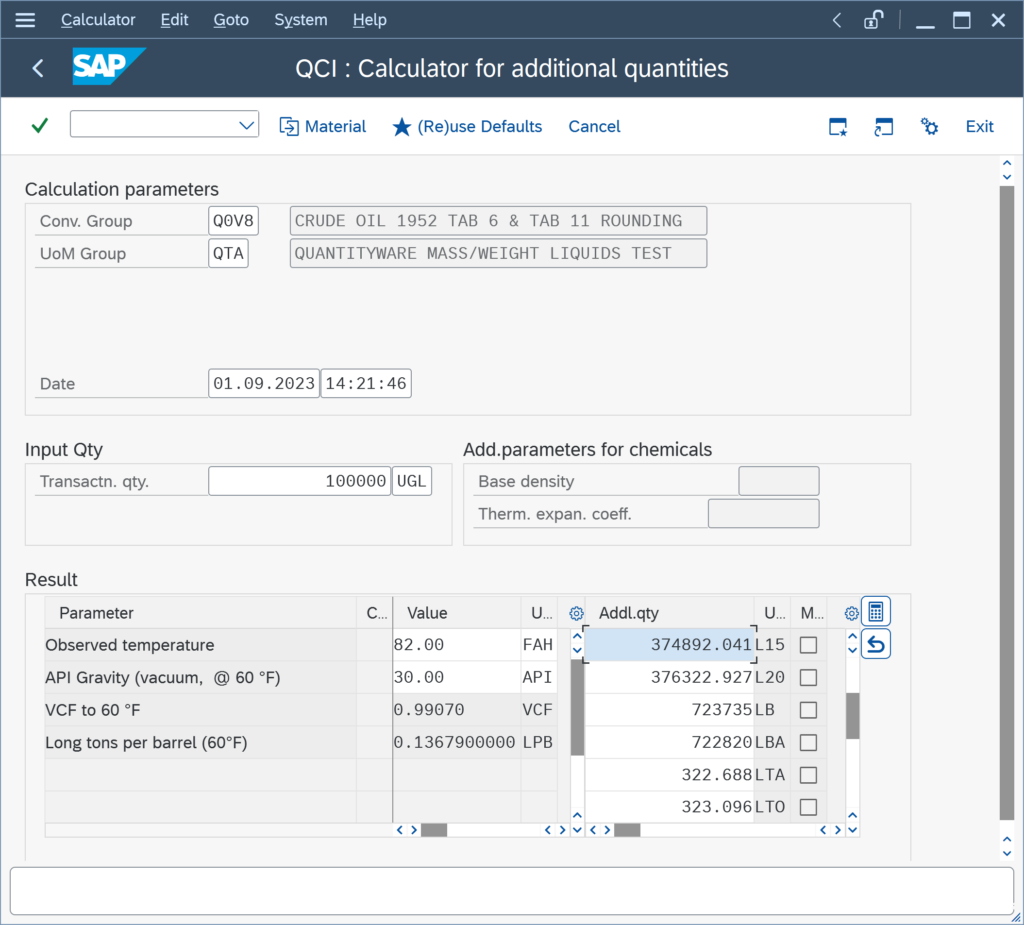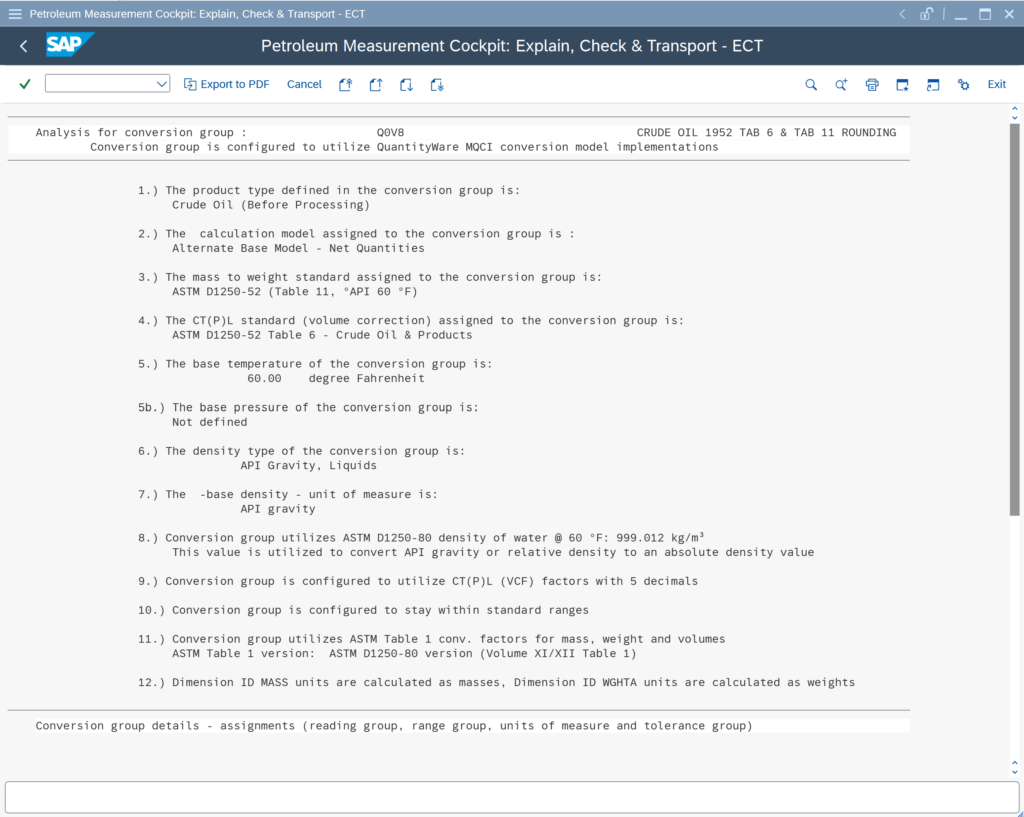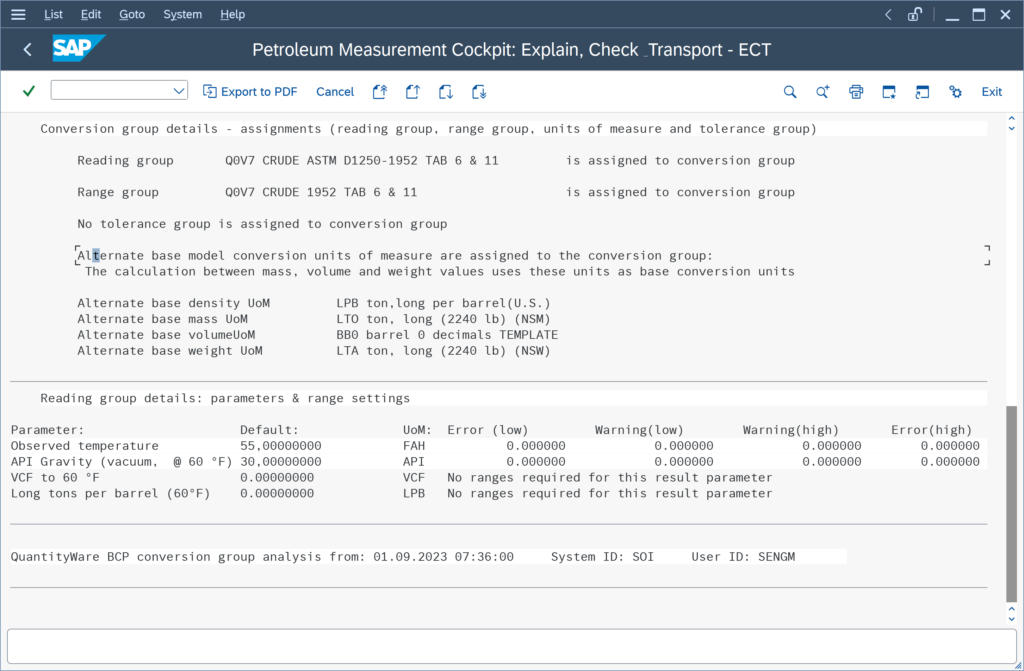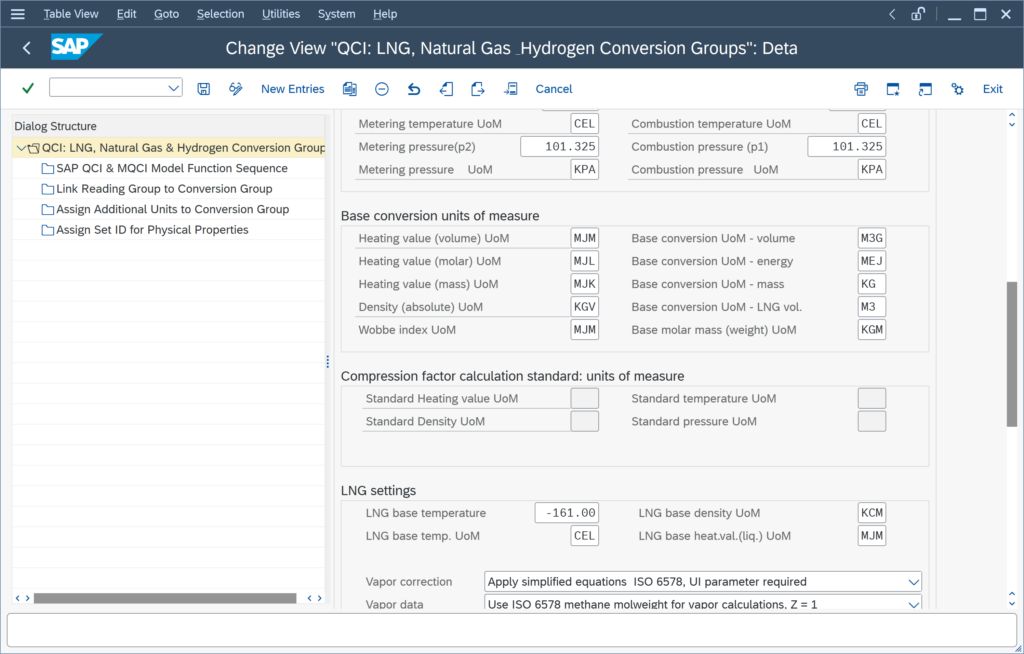How are the additional quantity values calculated for a specific conversion group?
You perform a test calculation utilizing transaction O3QCITEST, and you want to manually confirm (e.g. via an XLS) the calculation results:

For each conversion group, exactly one calculation model is defined/configured. Details for all models can be found in the BCP Documentation Reference Manual, Chapter 6.4 .
The calculation of the L15, L20, LB, … quantity values is performed sequentially, i.e. for each UoM a defined model calculation sequence is executed.
The fundamental concept is, that each conversion group is defined to perform the calculations via a set of so-called Base Conversion Units of Measure.
This means, that from a programming point of view, quantity equations are implemented for each model, such that one UoM conversion is executed as a first calculation step, and one UoM conversion is executed as the last step. All other intermediate steps are performed within the consistent base conversion UoM set via quantity equations. That consistency must be maintained or incorrect calculations will result. Details can be found in the BCP Documentation Reference Manual, Chapter 6.5.1.
Rounding of quantity values is described in the BCP Documentation Reference Manual, Chapter 6.5.3 . It is important to note that rounding of intermediate quantity values may destroy the calculation symmetry of your configuration. Thus, QuantityWare recommends to only round final target quantity values if not required otherwise. Read the Real Rounding FAQ for details how to define rounding of final target quantity values.
All BCP and BCG template conversion groups utilize a consistent and validated base conversion UoM set. SAP QCI BCP conversion groups always utilize the SI UoM as base conversion UoM.
Calculation results have been validated for all conversion groups via independent calculations and are secured via thousands of test scenarios delivered with the BCP and BCG template.
The Base Conversion UoM for BCP that are assigned to the conversion group can be found in the conversion group online documentation in the PMC:
Navigate to section “Conversion group details” to inspect the Base Conversion UoM:


For natural gas and LNG, the Base Conversion UoM are defined in the details view of the conversion group:

For such a complex validation and configuration task of your conversion groups, QuantityWare strongly recommends to involve a certified BCS consultant.
Categories: Oil & Gas Quantity Conversion Basics FAQs
Back to FAQs



